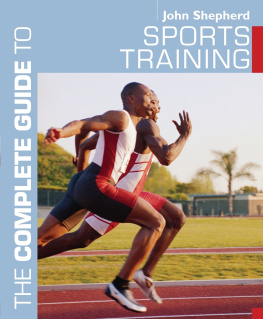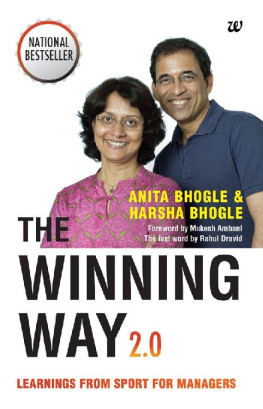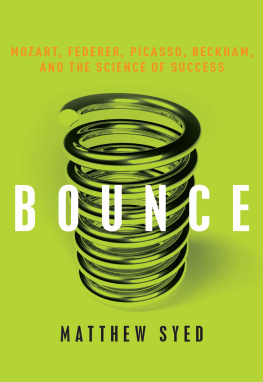In accordance with the U.S. Copyright Act of 1976, the scanning, uploading, and electronic sharing of any part of this book without the permission of the publisher constitute unlawful piracy and theft of the authors intellectual property. If you would like to use material from the book (other than for review purposes), prior written permission must be obtained by contacting the publisher at permissions@hbgusa.com. Thank you for your support of the authors rights.
Thank you for buying this e-book, published by Hachette Digital.
To receive special offers, bonus content, and news about our latest e-books and apps, sign up for our newsletter.
Sign Up
Or visit us at hachettebookgroup.com/newsletters
Copyright 2013 by Po Bronson
All rights reserved. In accordance with the U.S. Copyright Act of 1976, the scanning, uploading, and electronic sharing of any part of this book without the permission of the publisher constitute unlawful piracy and theft of the authors intellectual property. If you would like to use material from the book (other than for review purposes), prior written permission must be obtained by contacting the publisher at permissions@hbgusa.com. Thank you for your support of the authors rights.
The authors previously published a version of their Chapter Two discussion of the N-Effect, as New Research: Taking the SAT in a Crowded Room Means Lower Scores, a 2009 essay for their NurtureShock blog for Newsweek.
The image from the Reading the Mind in the Eyes test used in Chapter Nine appears courtesy of Simon Baron-Cohen. The selected questions from the Taiwanese Basic Competency Test included in Chapter Four were provided courtesy of Chun-Yen Chang.
Twelve
Hachette Book Group
237 Park Avenue, New York, NY 10017
www.hachettebookgroup.com
www.twitter.com/grandcentralpub
First e-book edition: February 2013
Twelve is an imprint of Grand Central Publishing.
The Twelve name and logo are trademarks of Hachette Book Group, Inc.
The publisher is not responsible for websites (or their content) that are not owned by the publisher.
The Hachette Speakers Bureau provides a wide range of authors for speaking events. To find out more, go to www.hachettespeakersbureau.com or call (866) 376-6591.
ISBN 978-1-4555-1516-5
NurtureShock: New Thinking about Children
ALSO BY PO BRONSON
Why Do I Love These People?
What Should I Do with My Life?
The Nudist on the Late Shift
The First $20 Million Is Always the Hardest
Bombardiers
What counts is not necessarily the size of the dog in the fightits the size of the fight in the dog.
President Dwight D. Eisenhower

A horse never runs so fast as when he has other horses to catch up and outpace.
Ovid

1
S cholars didnt get away with these kinds of experiments in the United States. Why the University of Triers Ethics Board approved of her experiment, we still dont completely understand.
What we do know is that, at some point, Renate Deinzer received her universitys blessing. And there she stoodin the middle of a tiny airfield in the Mosel wine region of Germanyfacing sixteen terrified people she had convinced to go skydiving for the very first time.
In a single day, each was going from Total novice who had never done anything like this, to Mastering advanced free fall.
Scaring people to death was exactly the point of Deinzers experiment. She was trying to discover how the body responds to incredible stressors: she wanted to know if there was a biochemical expression of fear to match the frightened expressions she saw before her.
Before and after their jumps, Deinzer asked each person to chew a small gauzy sponge and then spit the sponge into a test tube. From these saliva samples, Deinzer could discern exactly how the acute stress of skydiving manifested itself, biologically: she could measure the telltale psychoendocrine cocktail of the skydiving rush.
Three to four people went up in the small plane each timebuckled into the floor. Their hearts felt as if theyd pound right out of their chests if not restrained by the straps of their chute packs.
In just five minutes, the plane reached 10,000 feet in altitude over the drop zone. As nervous as they were, for the greater good of science, none chickened out. As the plane slowed to a hundred miles per hour, one by one they climbed onto the rails and dropped off the trailing edge. They tumbled once, then stabilized in the arch positiontheir bellies and faces to the earthfree-falling at 120 miles per hour.
For a long minute, the newborn parachutists felt the extraordinary sensation of hurtling toward the vineyards below.
In a first free fall, people can get so scared that they forget to breatheor they hyperventilate. Which is a particular concern because at a 10,000-foot altitude, people already start to feel the effects of the reduced oxygen supply, and the air pressure alters how arteries function. If severe enough, this can trigger hypoxia, a condition that results in temporary blindness and impairment in memory and reasoning. The moment of pulling the ripcord to save oneself is sometimes so intense that, for some, they faint just as their canopy opens and remain unconscious for part of the flight down.
None of Deinzers subjects experienced complications, though. Hearing instructions via radio sets in their crash helmets, they were guided toward the landing strip, where most were able to glide in standing up.
However, this wasnt a Do this once and check it off the bucket list day. Instead, they had to do it again. Deinzer had asked each person to make three separate jumps that very day: after theyd landed, they chewed a sponge and waited their turn to go back up. For some, they did all three jumps within the span of a single hour.
Why did they have to jump three times?
Deinzer was also interested in whether people habituate to the rush of skydivingdo you get used to it, such that it doesnt trigger the same degree of blast?
Analyzing the jumpers saliva samples, Deinzer wasnt surprised to learn that they had a huge rush response to the first jump. But with each subsequent jump, the rush was reduced by about a quarter. By just the third jump, there was still a pronounced rush of stress, but (on average) it was now only half the first jumps intensity. It was more akin to the stress you get from driving in slow traffic thats making you late.
Apparently, hurtling to the earth in a free fall is something you can get acclimated to, rather quickly.
Now, there are many people who go skydiving frequently and love it. But if repeated skydiving doesnt reliably trigger a massive surge in natural hormonesthen whats the ongoing appeal? Stephen Lyng is a scholar who studies edgework, a term borrowed from Hunter S. Thompsons description of anarchic human experiences. During the 1980s, Lyng was a jump-pilot at a local skydiving center. He contrasted what he learned there from skydivers with what he learned later by studying car racers, downhill skiers, combat soldiers, and business entrepreneurs. Lyng eventually concluded that the true high of skydiving, and other edgework, stems from the way skilled performance brings control to a situation most people would regard as uncontrollable. All of the safety rituals used to minimize the danger (in situations of extreme risk) engender this sense of control, but edgeworkers fundamental skills are the ability to avoid being paralyzed by fear and the capacity to focus their attention on the actions necessary for survival. The feeling of self-determination they get from conquering the risks is the real payoff. Its not pure thrill they seek, but the ability to control the environment within a thrilling context.







![Thomas W. Miller [Thomas W. Miller] - Sports Analytics and Data Science: Winning the Game with Methods and Models](/uploads/posts/book/119598/thumbs/thomas-w-miller-thomas-w-miller-sports.jpg)




